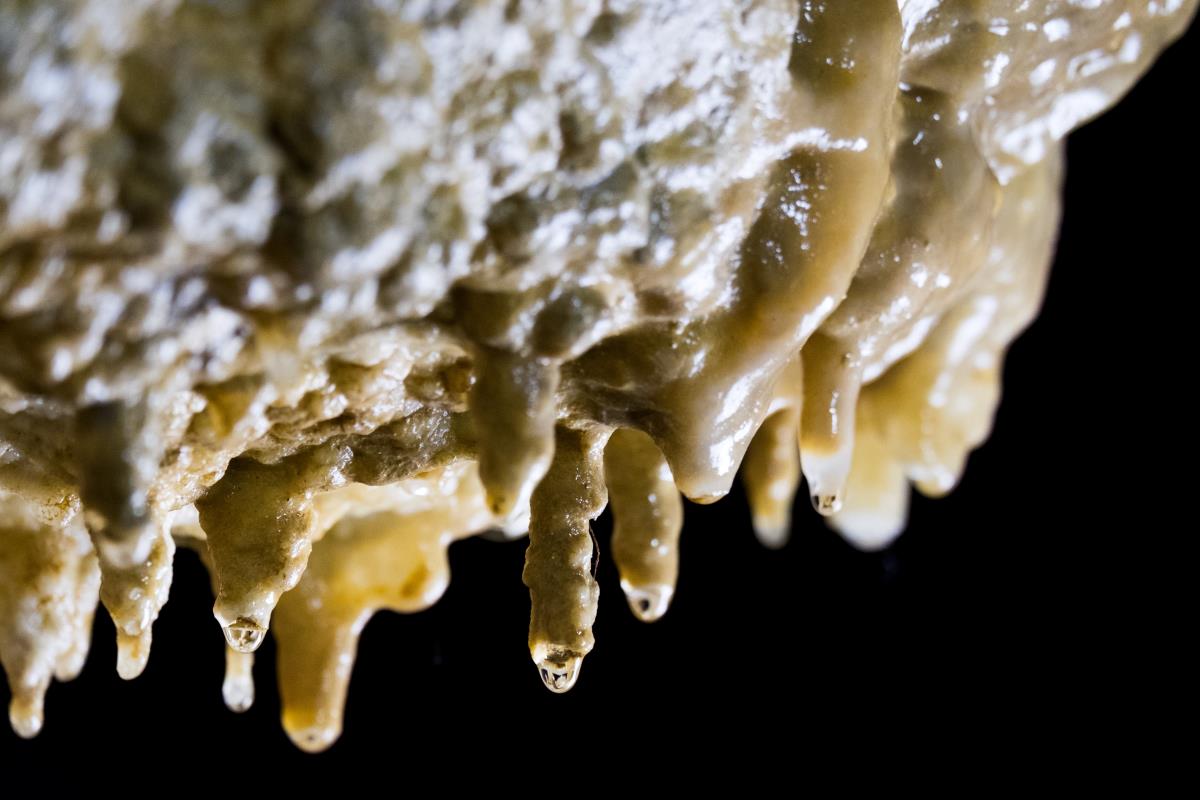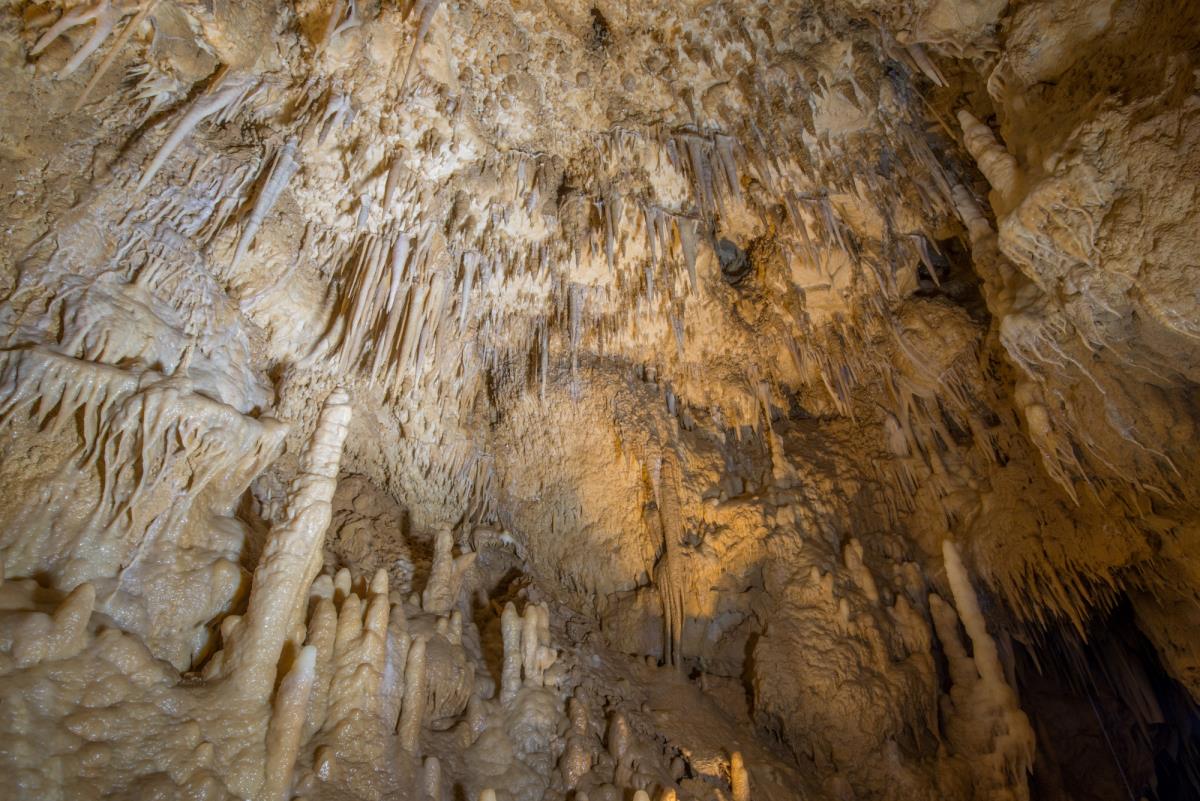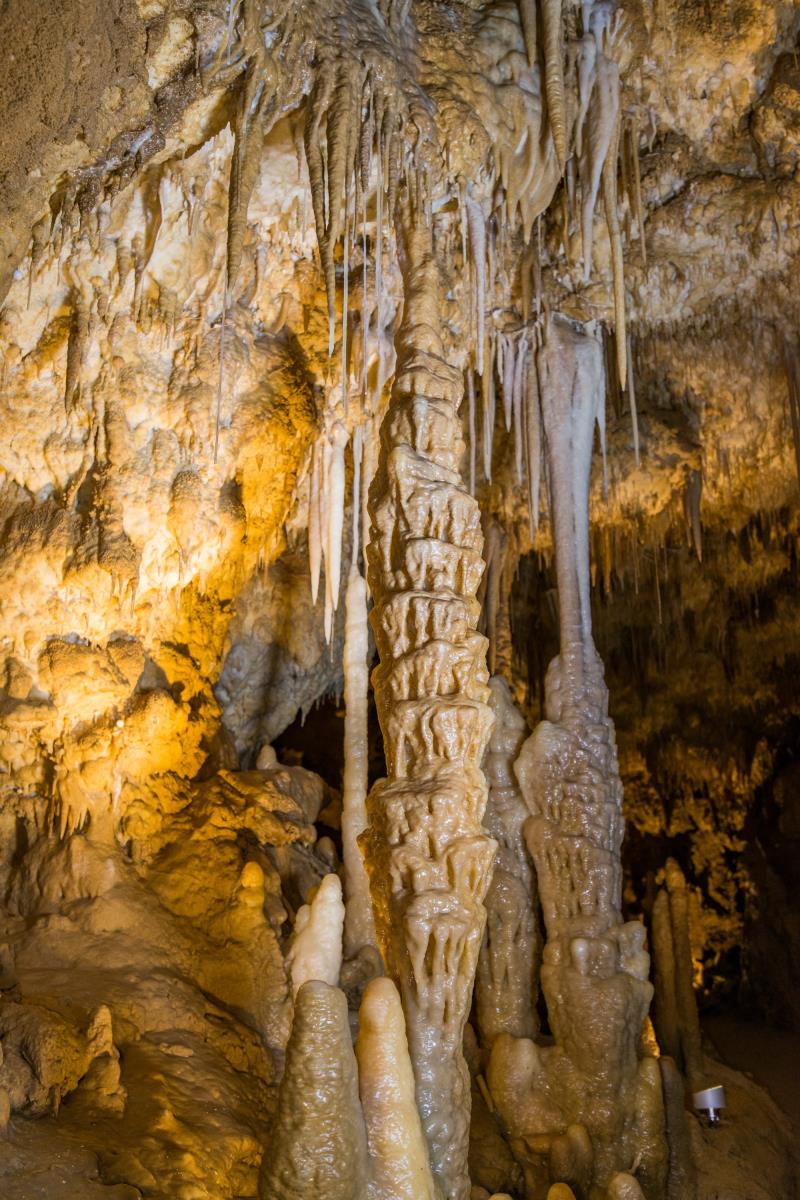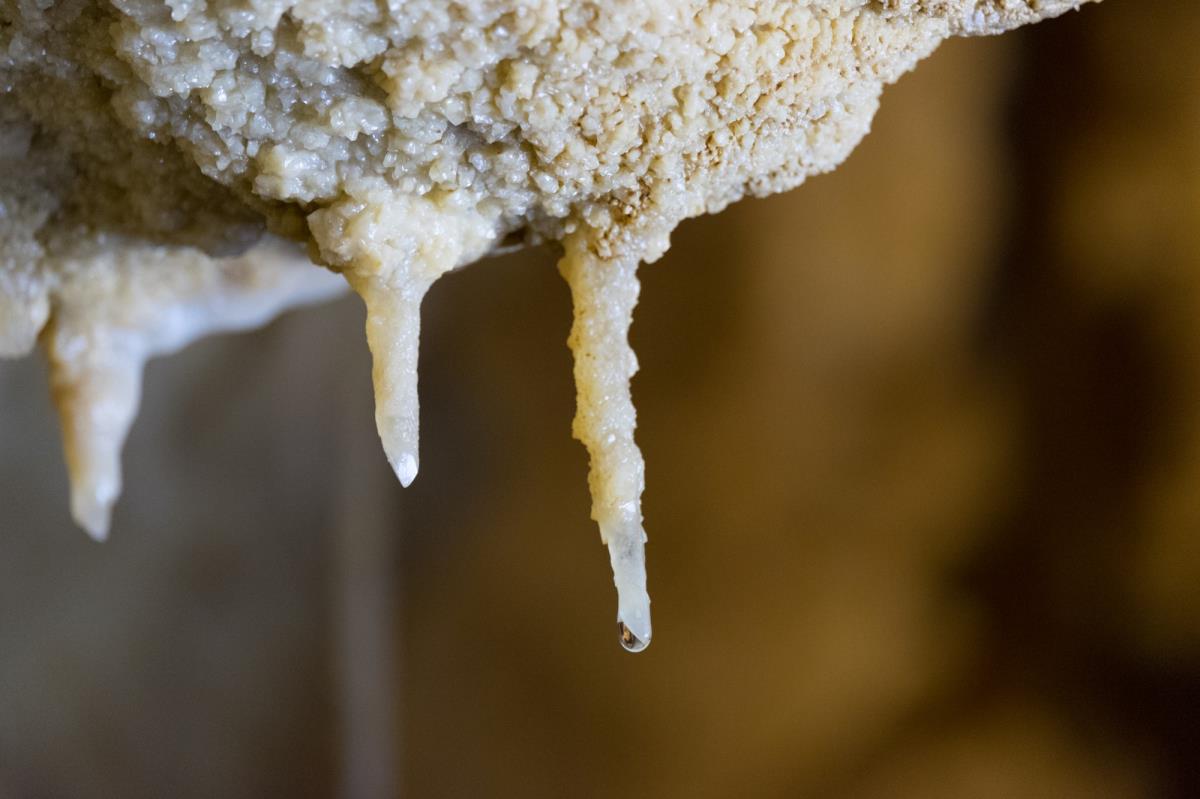GRGOSOVA ŠPILJA (GRGOS CAVE) GEOMORPHOLOGICAL NATURAL MONUMENT
Category of protection: natural monument Year of protection: 1973
Location
Otruševec, a small village near Samobor, is proud to be the site of Grgos cave, one of the most beautiful caves of the Croatian northwest. Grgos cave, a geomorphological natural monument, is located at the easternmost part of the Samobor hills, more precisely, at the point where the hill steeply descends toward the Sava valley.
History
The cave was first discovered in late 1973. During one of his drilling and blasting operations to obtain the stone he used for lime production, Josip Grgos unexpectedly spotted a cave. In 1974 this cave was proclaimed as a protected area in the category of geomorphological natural monument. Forty years later, an entrance to another cave was revealed during construction work being done to expand the visitor admission area. This cave became known as the New Grgos cave.
Tourism
The grandeur of these caves, in addition to their accessibility, draws a host of nature lovers and others curious about natural wonders. Both caves are open for visitors; there is a pathway through the “new cave” and electric lighting is installed. During the walk through the cave, it is very important not to touch or break the speleothems because these formations lose their splendour anywhere outside their natural environment which is, of course, a cave. It takes millennia for nature to create something like this, but only a single second to destroy it.
The caves offer inspiration to artists who often find in them the perfect setting for their movies, TV shows, music videos and all sorts of other broadcasts.
The caves offer inspiration to artists who often find in them the perfect setting for their movies, TV shows, music videos and all sorts of other broadcasts.
Natural values
Both caves are relatively small in size, but what makes them so amazing, as well as widely recognizable as a part of the Zagreb County geoheritage, is the magnificence of their speleothems. Grgos cave is 52 m long and 19 m deep. Its total volume is 1750m3. The “new cave” is 97 m long and 14 m deep.
The thick stalactitic deposits, and the stalagmites found on the ground testify to the considerable age of the cave, while the myriad of thin stalactites on the roof indicate that the process of creation and formation in these caves is an ongoing one.
The sheer number and variety of cave formations add to the significance of these caves. The formations decorating Grgos cave include soda stalactites, helictites and draperies. Soda straws are thin stalactites with an elongated cylindrical shape, and helictites are stalactites with spiral projections that appear to defy gravity. Curtains or draperies are beautiful stalactites hanging downward from the roof like a draped fabric; they are formed when the precipitant droplets slowly stream down the sloping walls. Each new droplet leaves behind a trace of deposit, thus adding length to the curtains.
Analysis of the speleothems found in these caves revealed they are composed of 95% calcium carbonate and 5% aluminium silicate. The Grgos cave speleothems vary in colour - white, tan, yellowish, orange and brown. Their hue is a matter of their mineral composition, the soil above the cave, the green cover and the environmental status.
So far, two speleothems from Grgos cave have undergone analysis to determine their age and learn about the climate conditions of the past. There is one stalactite there whose formation began 10 500 years ago and ended around 2300 years ago. During the formation process, its growth rate was 0,8-1cm per 100 years, or 0,008-0,1 mm a year. The age of the other speleothem is presumed to be around 40 000 years, while the change in its growth rate is estimated at 0,1 to 1 cm per 100 years.
The air temperature within the cave varies between 10 º and 11ºC.
The thick stalactitic deposits, and the stalagmites found on the ground testify to the considerable age of the cave, while the myriad of thin stalactites on the roof indicate that the process of creation and formation in these caves is an ongoing one.
The sheer number and variety of cave formations add to the significance of these caves. The formations decorating Grgos cave include soda stalactites, helictites and draperies. Soda straws are thin stalactites with an elongated cylindrical shape, and helictites are stalactites with spiral projections that appear to defy gravity. Curtains or draperies are beautiful stalactites hanging downward from the roof like a draped fabric; they are formed when the precipitant droplets slowly stream down the sloping walls. Each new droplet leaves behind a trace of deposit, thus adding length to the curtains.
Analysis of the speleothems found in these caves revealed they are composed of 95% calcium carbonate and 5% aluminium silicate. The Grgos cave speleothems vary in colour - white, tan, yellowish, orange and brown. Their hue is a matter of their mineral composition, the soil above the cave, the green cover and the environmental status.
So far, two speleothems from Grgos cave have undergone analysis to determine their age and learn about the climate conditions of the past. There is one stalactite there whose formation began 10 500 years ago and ended around 2300 years ago. During the formation process, its growth rate was 0,8-1cm per 100 years, or 0,008-0,1 mm a year. The age of the other speleothem is presumed to be around 40 000 years, while the change in its growth rate is estimated at 0,1 to 1 cm per 100 years.
The air temperature within the cave varies between 10 º and 11ºC.
Sights
Otruševec educational trail
Just a 90-minute walk down the 2 km long trail along 9 very diverse points introduces you to the way of life, traditions and legends of the Otruševec area: ranging from the underground marvels of Grgos cave, the geological and biological specificities, to the tales of ancient giants and hard-working people of the Samobor area.
Just a 90-minute walk down the 2 km long trail along 9 very diverse points introduces you to the way of life, traditions and legends of the Otruševec area: ranging from the underground marvels of Grgos cave, the geological and biological specificities, to the tales of ancient giants and hard-working people of the Samobor area.
Known about the unknown
Grgos cave is home to nine groups of invertebrates: spiders, pseudoscorpions, isopods, centipedes, diplopods, springtails, two-pronged bristletails, beetles and orthopterans. When it comes to biodiversity of subterranean fauna, Croatia is one of the world hotspots. Many subterranean species are in fact endemic to either Croatia or the Dinarides.
The area is open for visitors
- Address: Otruševec 17/4, Samobor, Croatia
- Opening hours: business days, every hour on the full hour between 12:00 and 17:00 hrs
- Schedule your visit: to schedule a group visit, please call 01/3375 888
This area is managed by Zeleni prsten Public institution of Zagreb County
- Address: 151. Samoborske brigade HV 1, Samobor, Croatia
- Phone: +385 (0)1 6111 552
- Website: https://zeleni-prsten.hr/
- Find us:
https://www.facebook.com/zeleniprsten
https://www.instagram.com/zeleni_prsten/









